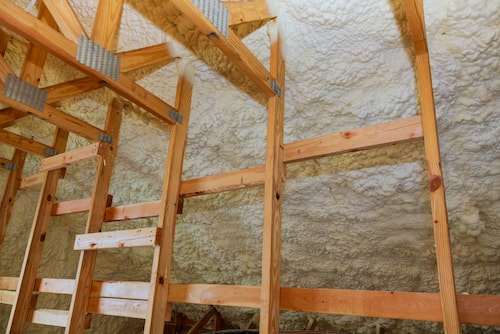Have you ever thought about how much it costs to get engraved metal business cards? Well, lucky for you, we’re here to give you some information on this interesting topic. Engraved metal business cards can give you a unique and sophisticated way to make a lasting impression. However, the price can vary depending on a few things. The type of metal used and the level of customization are just a couple of factors that can affect the cost. If you want to know more about the average price range, additional costs to consider, and tips for finding affordable options, then keep reading. This valuable information could really take your business card game to the next level.
The cost of engraved metal business cards can vary quite a bit. On average, you can expect to pay anywhere from $2 to $10 per card. This can depend on the type of metal you choose. For example, stainless steel is usually on the lower end of the price range, while more expensive metals like gold or silver can increase the cost. Additionally, the level of customization you want can also affect the price. If you’re looking for a simple design with just your name and contact information, it will likely be less expensive than a more intricate design with logos or graphics.
It’s also important to consider any additional costs that may come up when getting engraved metal business cards. For example, some companies may charge extra for design services or for rush orders. Shipping costs should also be taken into account, especially if you’re ordering from a company located far away. These extra expenses can add up, so it’s a good idea to factor them into your budget when considering engraved metal business cards.
If you’re looking for more affordable options, there are a few tips to keep in mind. First, consider ordering in bulk. Many companies offer discounts for larger orders, so this can help bring down the cost per card. Additionally, shop around and compare prices from different suppliers. You may be able to find better deals or promotions that can save you money. Finally, consider opting for a simpler design. The more complex the design, the more expensive it will be. So, if you’re on a tight budget, keeping it simple can be a cost-effective choice.
Factors Affecting the Cost of Engraved Metal Business Cards
When considering the pricing of engraved Metal Kards, several factors come into play. One crucial aspect is the choice of metal. Different metals incur varying costs, with gold being the most expensive and stainless steel offering a more budget-friendly option. The intricacy of the design also influences pricing; elaborate designs requiring more time and skill to engrave typically come at a higher cost compared to simpler ones. Additionally, the size and thickness of the card contribute to pricing, as larger and thicker cards require more materials and labor. Quantity matters too, as bulk orders often come with discounts, potentially reducing the price per card. Customization adds another layer of cost, with personalized details like names or contact information increasing the overall price. Finally, the chosen finish, whether matte, polished, or brushed, can elevate the aesthetic appeal of Metal Kards but may also escalate the cost. Therefore, when assessing the pricing of engraved metal business cards, it’s essential to consider factors such as the type of metal, design complexity, size and thickness, quantity, customization, and finish.
Types of Engraved Metal Business Cards Available
There are many options to choose from when it comes to engraved metal business cards. They offer a unique and sophisticated way to make a lasting impression. You can find a metal business card that suits your style, whether you prefer a minimalist design or something more intricate. Let me tell you about four types of engraved metal business cards that you can consider.
Stainless steel business cards are the most popular choice. They have an elegant and professional look with their sleek and shiny surfaces. When you hand out these cards, they are sure to catch the eye of the recipient. You can have your name, contact information, and even your logo engraved on them. Stainless steel business cards are versatile and can be a great option for any business.
If you want to make a statement, you can go for copper business cards. Copper has warm tones and a unique texture that adds a touch of luxury to your cards. Whether you choose a simple design or opt for intricate engravings, copper business cards will leave a lasting impression on anyone who receives them.
For a modern and industrial look, aluminum business cards are a great choice. They are lightweight and durable, making them practical for everyday use. With their brushed or anodized finishes, aluminum cards offer a sleek and contemporary aesthetic. You can engrave your name and information on them, or get creative with unique designs and patterns.
If you prefer a classic and timeless look, brass business cards are the perfect choice. The golden hue and lustrous finish of brass give your cards a sophisticated and prestigious feel. Whether you prefer a traditional design or something more ornate, brass business cards are sure to make a statement.
No matter which type of engraved metal business card you choose, you can be confident that you’ll leave a lasting impression on your clients and business contacts. So why settle for ordinary paper cards when you can have something extraordinary? Upgrade to engraved metal business cards and elevate your professional image.
Average Price Range for Engraved Metal Business Cards
Let’s talk about the cost of these fancy engraved metal business cards that are sure to leave a great impression. When you invest in high-quality materials and craftsmanship, the average price range for engraved metal business cards is usually between $3 and $8 per card. This price can vary depending on a few things, such as the complexity of the design, the type of metal used, and the amount you order.
For example, if you go for a simple and classy design on stainless steel, you can expect to pay around $3 to $5 per card. But if you want a more detailed design on a premium metal like titanium or gold, the price can range from $5 to $8 per card. I know it might seem a bit pricey compared to regular paper business cards, but these metal cards are really special and have a unique look and feel.
It’s worth mentioning that the price per card usually goes down when you order a larger quantity. If you’re getting a large batch of engraved metal business cards, you might be able to negotiate a lower price per card with the manufacturer. Some manufacturers even offer package deals or discounts for bulk orders, so it’s worth looking into those options to make the most of your budget.
When you think about the cost of engraved metal business cards, it’s important to remember that they’re not just any old cards. They make a statement of professionalism, luxury, and exclusivity. They’re a powerful tool that can help you stand out from the competition and make a lasting impression on potential clients and business partners. So when you’re choosing engraved metal business cards, think of the price as an investment in your brand image and the long-term impact they can have on your business.
Additional Costs to Consider for Engraved Metal Business Cards
When you’re thinking about ordering engraved metal business cards, it’s important to consider any extra costs that might come up. The price range for these unique cards can vary, so it’s a good idea to factor in any additional expenses that might arise during the ordering process. Here are four costs that you should keep in mind:
- Design Fees: If you don’t already have a design ready, you might need to hire a graphic designer to create a custom layout for your metal business cards. The cost of design fees can vary depending on the complexity of the design and the expertise of the designer. So, it’s important to consider this when you’re budgeting for your cards.
- Proofing and Revisions: Before your metal business cards are produced, you’ll probably receive a proof for your approval. This gives you the opportunity to review the design and make any necessary changes. Just keep in mind that multiple rounds of proofing and revisions might result in additional charges. So, it’s important to carefully review the proof to minimize any extra costs.
- Shipping and Handling: Engraved metal business cards are often heavier and more fragile than traditional paper cards. This means that they may require special packaging and shipping. So, don’t forget to factor in the cost of shipping and handling when you’re calculating the total expense of your order.
- Rush Orders: If you’re in a hurry and need your metal business cards quickly, you might have to pay extra for rush production and expedited shipping. This can be convenient if you’re pressed for time, but it’s important to consider the urgency against the additional cost. Make sure to determine if it’s worth it for your specific needs.
Tips for Finding Affordable Engraved Metal Business Card Providers
When you’re searching for a good engraved metal business card provider, it’s important to keep your budget in mind and look for affordable options that still give you high-quality results. It can be a bit tricky to find a provider that offers competitive prices without compromising on the quality of their products, but with a few helpful tips, you can find the right fit for your needs.
One tip to find affordable engraved metal business card providers is to compare prices from different companies. Take the time to do some research and gather quotes from multiple providers. This will give you a clear idea of the average cost in the market and help you identify any outliers. Make sure to consider factors like the material used, the complexity of the design, and any additional services included in the price.
Another tip is to look for providers that offer discounts or promotions. Some companies may have ongoing offers or seasonal discounts that can significantly reduce the cost of your order. Keep an eye out for these opportunities and take advantage of them when they come up.
Additionally, consider working with a provider that offers customizable options. By choosing a company that allows you to select different finishes, shapes, and sizes, you can tailor your order to fit your budget. This flexibility can help you find a balance between affordability and getting the look and feel you want for your business cards.
 You might wonder about the chemical stability of spray foam over time. Initially, the foam can emit gases for a period ranging from hours to days, depending on the formulation and installation conditions. During this curing phase, proper ventilation is critical to minimize your exposure to harmful chemicals. Even after curing, some off-gassing can continue, albeit at lower levels, potentially impacting indoor air quality for an extended period.
You might wonder about the chemical stability of spray foam over time. Initially, the foam can emit gases for a period ranging from hours to days, depending on the formulation and installation conditions. During this curing phase, proper ventilation is critical to minimize your exposure to harmful chemicals. Even after curing, some off-gassing can continue, albeit at lower levels, potentially impacting indoor air quality for an extended period.

 Guide the way with elegantly illuminated pathways. Instead of harsh, glaring lights, choose fixtures that gently illuminate the ground, creating a subtle and inviting trail. Consider using solar-powered or low-voltage LED lights to highlight the walkway, allowing guests to navigate your outdoor space safely while adding a touch of sophistication.
Guide the way with elegantly illuminated pathways. Instead of harsh, glaring lights, choose fixtures that gently illuminate the ground, creating a subtle and inviting trail. Consider using solar-powered or low-voltage LED lights to highlight the walkway, allowing guests to navigate your outdoor space safely while adding a touch of sophistication.